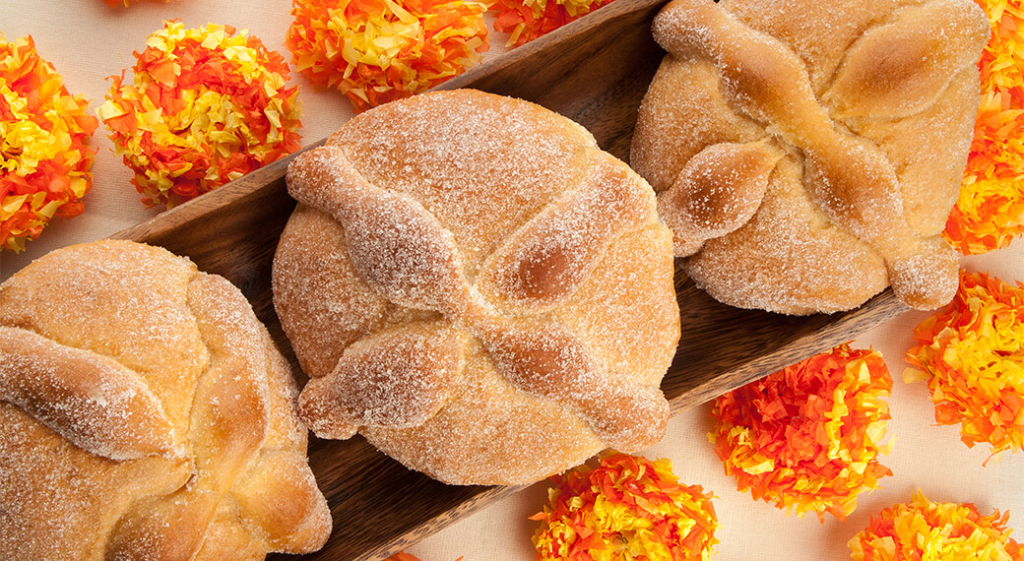Each autumn, Mexico awakens with a celebration unlike any other: Día de Muertos, or “Day of the Dead.” One essential part of Día de Muertos is pan de muerto or “bread of the dead.”
Joyful Reunions
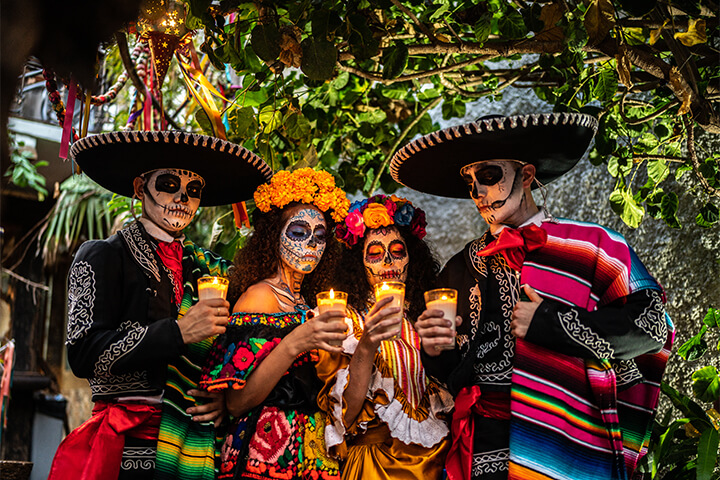
Día de Muertos, or “Day of the Dead,” is a multifaceted cultural celebration observed in Mexico and by Latinx communities in other countries. Often misunderstood as a somber, morbid, or Halloween-like event, it’s far more intricate, reflecting a profound respect for ancestors and a balanced philosophical perspective on death. Día de Muertos is a uniquely joyful reunion between the living and their dearly departed, wherein food serves as both a bridge and a feast for the returning souls.
A Feast for the Dead
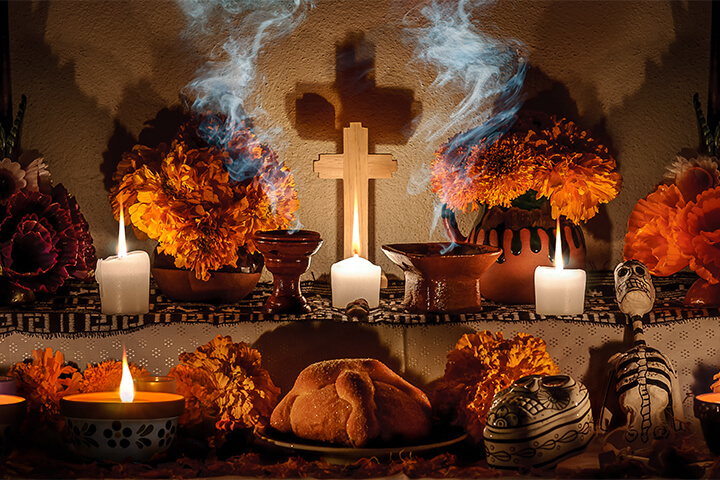
The centerpiece of Día de Muertos is the creation of intricate “ofrendas,” or offerings. These multi-tiered altars are meticulously constructed in homes and cemeteries. Each element placed on ofrendas carries symbolic weight. For instance, cempasúchil, the fragrant marigold flower, is chosen to guide the spirits home with its vibrant orange color and bright aroma. Water quenches their thirst after their long journey, while pan de muerto serves as nourishment and a bridge to the living.
Photos of loved ones that have passed create a poignant connection, while personal mementos — a favorite cigar, a half-finished knitting project — reaffirm the individuality of the departed. Colorful skulls, often fashioned from sugar, are a reminder of death’s universality, but also a celebration of life once lived.
Deciphering Pan de Muerto
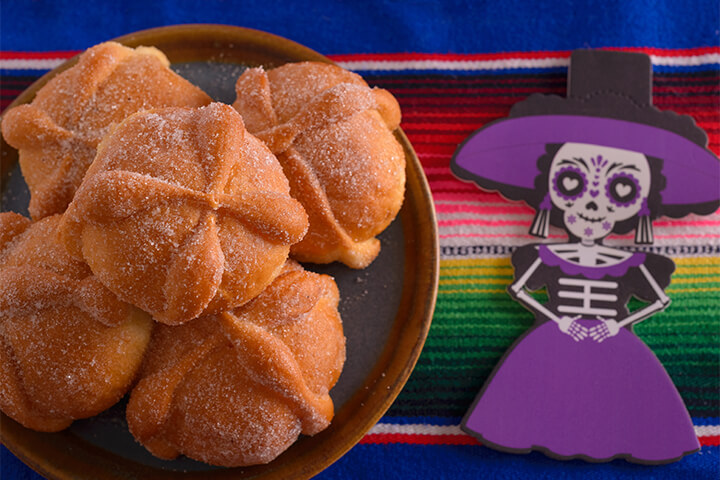
Pan de muerto is baked in the weeks leading up to November 1st and 2nd, the heart of Día de Muertos celebrations. Classically, its texture is soft and slightly crumbly, similar to brioche, and dusted with sesame seeds or granulated sugar.
Its very form is imbued with symbolism. Ultimately, its shape represents the cyclical nature of life and death, a comforting reminder that even in the absence, the departed remain a part of the life cycle.
Pan de muerto is not a monolithic entity. Beyond flour, sugar, milk, and eggs, it undergoes regional variations across Mexico, each reflecting local ingredients and customs. Some variations are animated with colorful sugar skulls for a playful nod to mortality. Others use a sweeter and eggier dough flavored with anise seeds, or a richer version with more butter and orange blossom water. Some bakers incorporate a “lágrima” (tear) made of sugar, that represents the Aztec goddess Chīmalmā crying for the living.
Bread for the Living and Dead
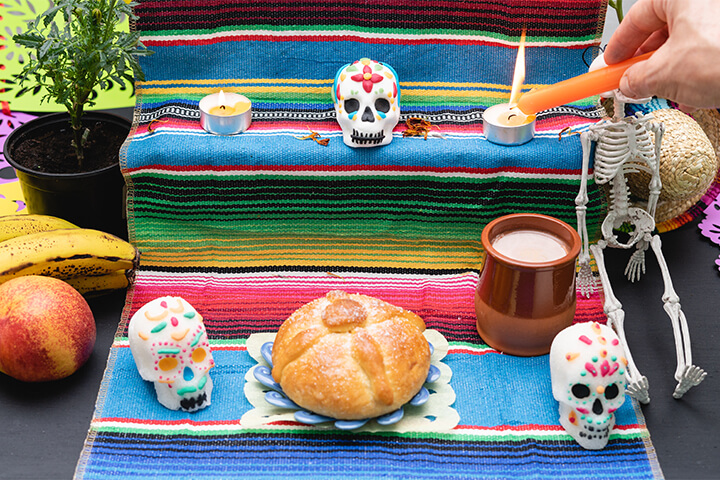
Traditionally, families prepare two types of loaves: large ofrendas placed on home altars as well as smaller loaves that are enjoyed as a communal treat, strengthening bonds between living and deceased loved ones. In some regions, bakeries offer personalized loaves inscribed with names for a touching gesture of remembrance.
Sharing pan de muerto signifies the continued bond between the living and the dead. Families may break off pieces of the bread, leaving them on the ofrenda as a gesture of remembrance. In some households, a single whole loaf is left untouched, reserved specifically for the deceased.
Pan de Muerto in the United States
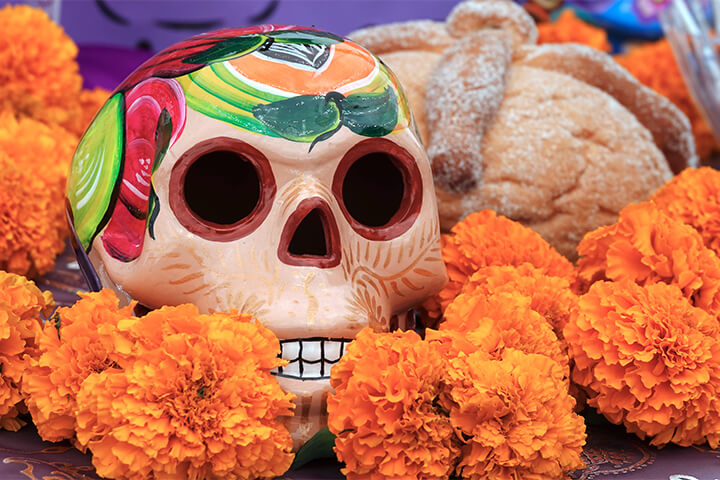
Modern-day Día de Muertos continues to evolve. Diasporic communities far from Mexico have adopted and adapted the traditions, incorporating elements of their new homes. And where Día de Muertos goes, so goes its baked counterpart.
In the United States, pan de muerto has a notable presence in major cities with large Mexican communities such as Los Angeles, Chicago, New York, Houston, Phoenix, and San Antonio. Pan de muerto has also gained popularity among mainstream bakeries and pastry shops across the United States. Many establishments recognize the bread’s appeal and have incorporated it into their seasonal offerings.
American bakeries interested in offering pan de muerto can maintain its cultural significance by collaborating with Mexican bakers, by holding deep knowledge of the bread’s meaning within Day of the Dead festivities, and by sourcing traditional ingredients like piloncillo (unrefined cane sugar) for a respectfully authentic experience.
Pan de Muerto and the Power of Remembrance
Pan de muerto has a far deeper meaning than a simple carb-filled treat. It fully embodies the essence of Día de Muertos. The act of baking, decorating, and sharing this bread becomes a tangible expression of grief, love, and unwavering remembrance. It’s tied to history, cultural beliefs, a profound respect for life’s impermanence, and acts as a bridge between the living and the dead, rolled out into one colorful holiday.

